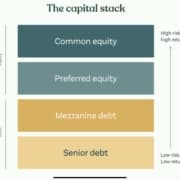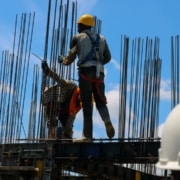What you need to know about the new federal Labour government’s housing industry policies


Written by David Lovato – CPC Lending Solutions
May 2025
With the election now behind us and interest rates set to fall in the coming months, lenders are adjusting their criteria to win new business in the housing sector.
The re-elected Labor Party has some ambitious plans for the country’s housing and construction sectors. It is a multipronged approach that aims to assist the demand for housing from the supply side (developers have more certainty in their end buyers), as well as allowing consumers into their homes faster (particularly first home buyers) by lowering entry barriers to property ownership.
These policy changes are significant for property industry professionals and borrowers alike, as they will have a profound impact on the housing market.
What you need to know about the new federal Labour policy settings
1. Boosting homeownership for first home buyers
Labor has pledged $10 billion to construct 100,000 new homes over eight years, specifically for first home buyers, reducing competition from investors.
From 2026, the government will remove income limits for the First Home Buyers Guarantee, allowing all first home buyers to purchase a home with a 5% deposit without needing lender’s mortgage insurance (LMI).
Additionally, the Help to Buy shared equity scheme will expand, letting the government cover up to 40% of a home’s purchase price.
Lenders will target first home buyers and offer extremely competitive loans, they will want to get market share as the government policies will fuel loan security and longer-term capital growth.
Developers that provide exclusive new housing stock will qualify for construction funding with lower hurdles around required developer equity and presales.
2. Addressing the tight rental market
Labor’s Build to Rent (BTR) scheme includes tax incentives for developers who deliver BTR apartments with a portion of units set aside at below-market rents.
Developers will be encouraged to take on smaller BTR projects in established areas and provide more housing where needed. These include projects like new age boarding houses, short-term accommodation and larger BTR development.
3. Tackling housing supply constraints
Labor’s broader housing strategy includes a $78 million investment to fast-track the qualification of 6,000 apprentices, $54 million for prefabricated and modular home manufacturing, and $120 million to incentivise states to remove red tape around housing approvals.
Developers are already seeing an easing of construction costs through a combination of factors, for example, material cost decreases, off-site manufacturing, efficiency in site programs and stabilisation of wage growth.
Red tape around dwelling approvals and construction certificate approvals is starting to be cut as the industry gets to a better equilibrium between authority/approval costs, quality of construction and weeding out from the industry the dodgy developers and builders.
4. Managing foreign investment
From April 2025 to March 2027, foreign investors, including temporary residents, will be restricted from buying established dwellings.
The government has tightened its already restrictive policies around foreign ownership. This move around new product restrictions will be further welcomed by locals getting frustrated by missing out on home ownership.
5. Focusing on social housing
The government aims to deliver 55,000 social and affordable homes through the Housing Australia Future Fund and has allocated $1.2 billion for new crisis and transitional housing for vulnerable groups, including older women, young Australians, and those escaping family violence.
For developers in this space, this initiative will be a big driver of project starts. There are numerous state grants also available for affordable housing as governments try to do more to assist vulnerable people in a competitive housing market.
What is the expected impact on the market?
The overall impact is one of growth. These policy settings will increase activity in the property sector. Combined with lower interest rates moving into 2026, we will see more developers bringing projects to market and more homeowners and investors getting back into the property market.
CPC Lending Solutions is a property development and residential finance specialist. Whether you’re a developer needing funding for land, construction, or residual stock, or a buyer looking for the right mortgage, we’re here to help. Contact us at info@crowdpropertycapital.com.au or fill in this form.










